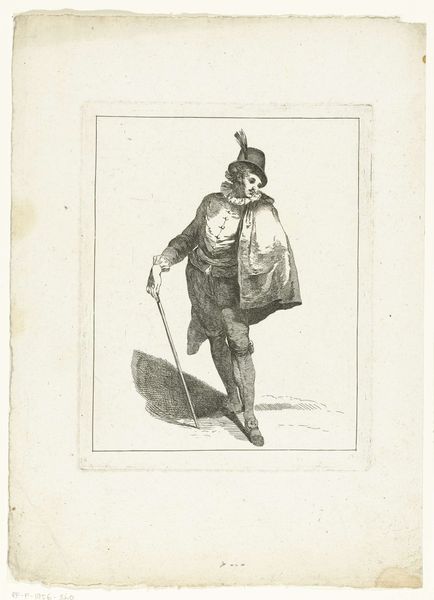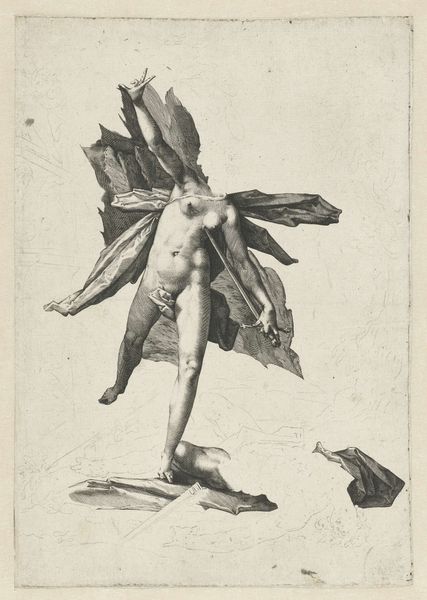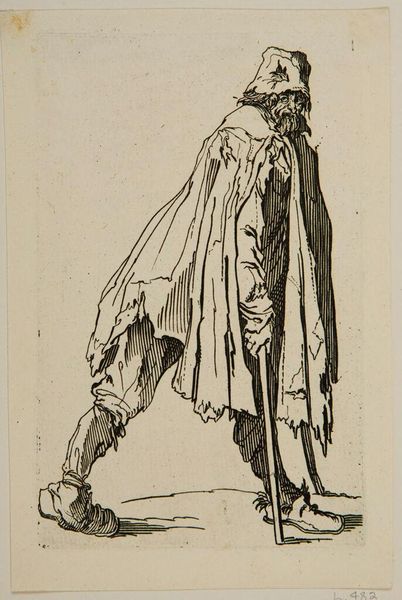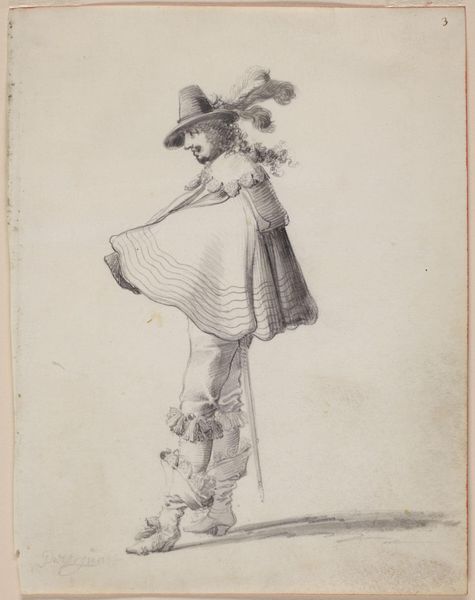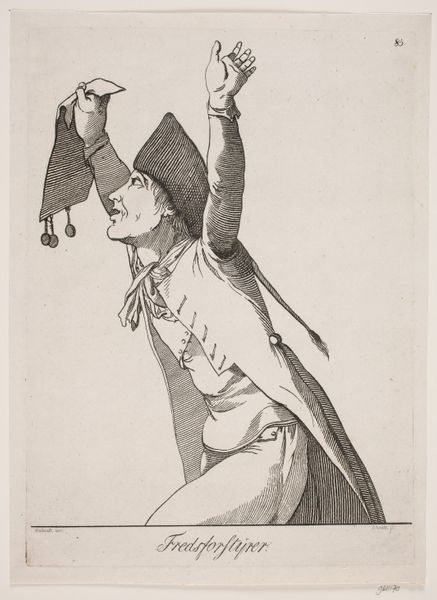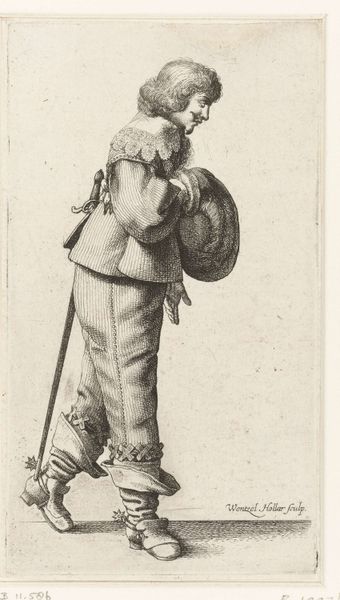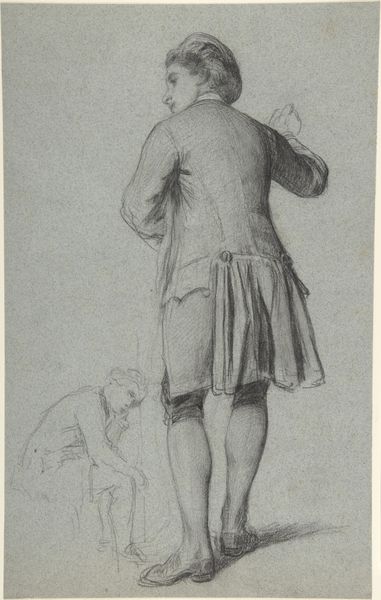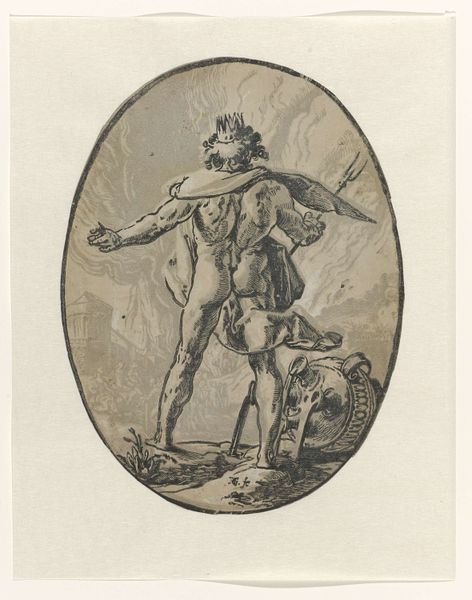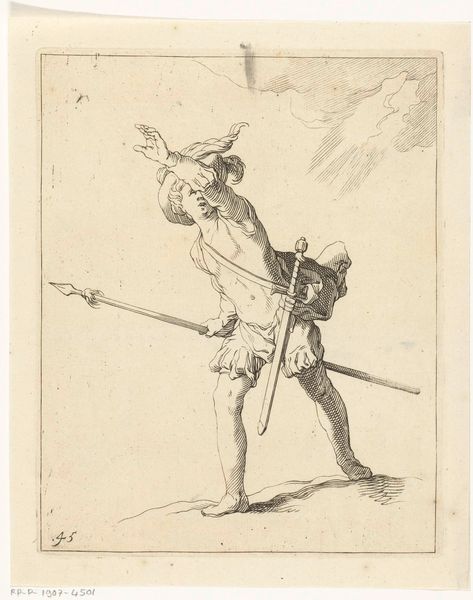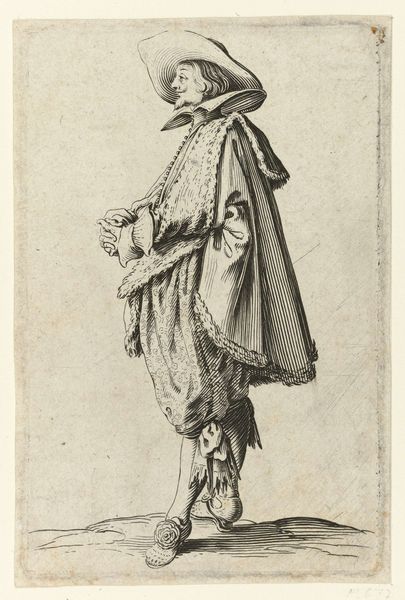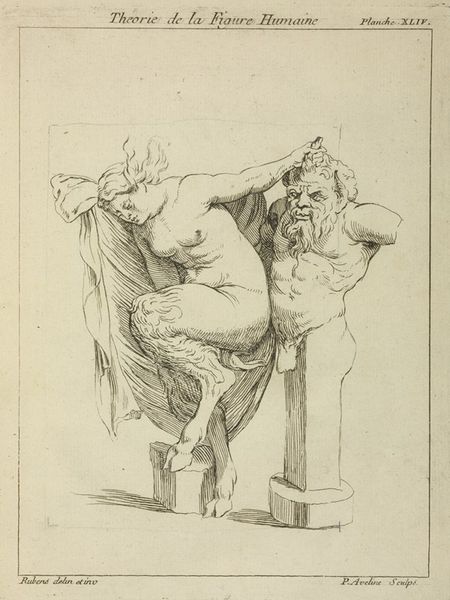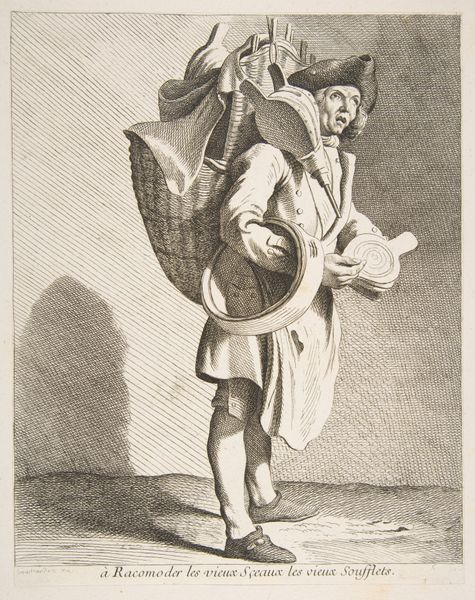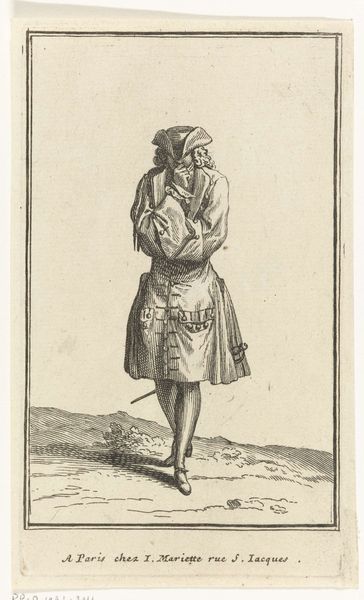
#
pencil drawn
#
imaginative character sketch
#
light pencil work
#
quirky sketch
#
pencil sketch
#
personal sketchbook
#
idea generation sketch
#
sketchbook drawing
#
pencil work
#
fantasy sketch
Dimensions: height 217 mm, width 144 mm
Copyright: Rijks Museum: Open Domain
Jacob Matham made this print, Wellust (Luxuria), in the late 16th or early 17th century, using the intaglio process. A metal plate, likely copper, was meticulously engraved to create this image. Look closely at the network of fine lines, which vary in thickness and density. These lines weren’t simply drawn; they were carefully incised, demonstrating a mastery of the burin, the tool used to carve the image. The process demanded intense concentration and control. Consider the time and labour invested in producing this print. Each mark contributes to the overall tonality and texture, rendering the draped figure. The intaglio process allowed for the creation of multiple identical prints, democratizing art and knowledge. Prints like this played a vital role in disseminating ideas and images across Europe, contributing to a shared visual culture. Paying attention to the materials and processes used in the creation of this print, we can gain a richer understanding of its meaning and impact.
Comments
No comments
Be the first to comment and join the conversation on the ultimate creative platform.
